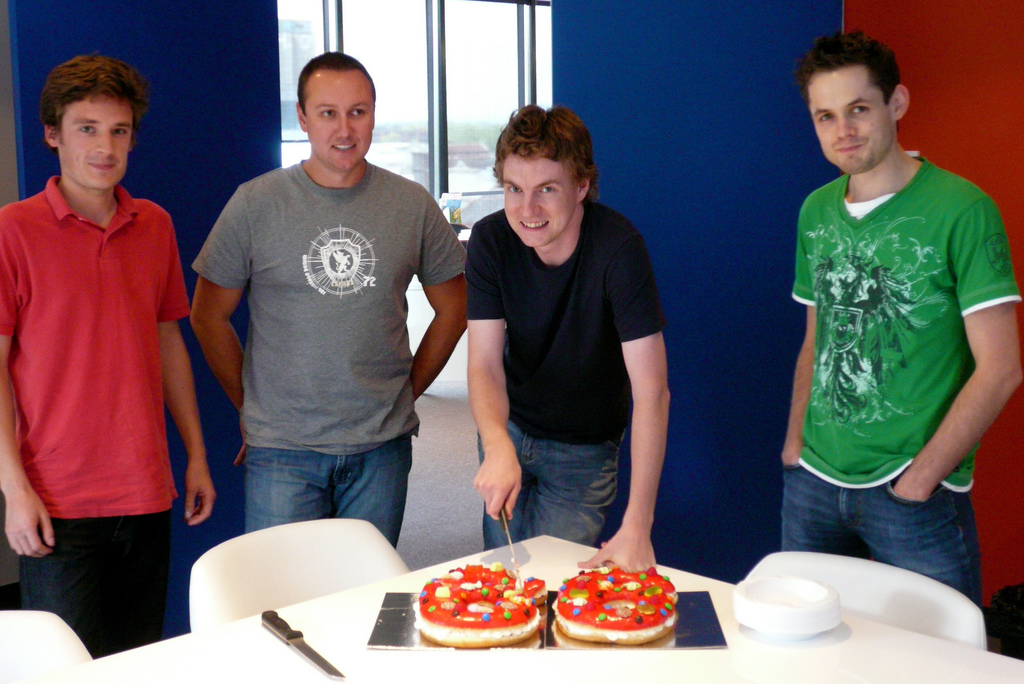The Melbourne, Australian company pays out about $2 million per month to designers on its site, according to its CEO, Patrick Llewellyn.
Comparing that to the $20 million it paid out in the three years between 2009 and 2011, that’s an almost four-fold growth.
But for every designer that gets paid, hundreds of others don’t.
99designs currently makes 90 percent of its revenue through design competitions. That is, a paying client puts up a request for a design—say a logo for example—and designers submit their work, in hopes of winning the job and getting paid.
Typically, contests can draw hundreds to thousand of entries, with only the final winner getting picked. Llewellyn didn’t comment on how many designers respond to competitions, but to give you an idea of the stream of responses, in June that one design is uploaded every four seconds to the site, and that 99designs has amassed about 23 million submissions in its five years.
99designs takes, at its lowest end, a 5 percent commission on jobs, and this can go up to 40 percent for clients on “gold level” tiers. This involves having a 99designs member of staff handhold you, from writing a design brief to selecting top designers and inviting them to your contest.
He wouldn’t break down the proportion of clients on the different tiers, but at the lowest cut of 5 percent, 99designs makes revenues of at least $105,000 a month.
Naturally, the company has copped some flak for its business model, which some say turns the design marketplace into a Walmart-style bazaar and thins out the profits for good designers. Critics also say that it is unfair to the many designers which put in work that eventually doesn’t get picked, resulting in designers working for no payment.
Llewellyn insisted, however, that the contest model has worked for its designers who willingly participate, because it’s become a “fantastic way to meet” clients.
And they are asking for more ways to interact with the site. “For a long time, we were just the facilitator for that meeting, but people are asking for more tools,” he said.
In response, the company is ploughing money back into building a payment gateway and a project management tool. It started building a basic version about 18 months ago, and now it’s rolling out the service to more of its users, he said.
Asian designers supply half of 99designs’ work.
Llewellyn said that the company paid $3 million in the past quarter to designers in Asia, a 10 percent increase over the previous quarter. This means that half of the design work is coming from the region.
But almost 70 percent of its sales still come from North American customers. The past year has seen 99designs expand into Europe, with sites in German, Italian, Spanish and Dutch. “We’ve put people on the ground in London, and doubled the Berlin team to 10,” he added.
Last year, it scooped up European rival, 12designer, for an undisclosed amount, too.
These moves haven’t shifted much of the proportion over to Europe yet, however. North America’s contribution has hovered at the 70 percent mark for the past few years, and Europe stands at 15 percent.
Over in Asia, in spite of the massive participation from designers there, just 5 percent of client work comes from the region.
The company launched its Singapore site, 99designs.com.sg, in June, about a month after it created 99designs.hk for Hong Kong.
While it has targeted the two Southeast Asian economic hubs for business development, designers in Indonesia and the Philippines have contributed the most work in the region. The two countries have taken $10 million of the total $54 million that 99designs has paid out over the past five years.
The company competes with a fellow Aussie company, DesignCrowd. The latter, also founded in 2008, just told that it has hit $10 million in project revenue. It’s on track to hit $1 million a month in client fees, it said.
99designs was founded by Mark Harbottle and Matt Mickiewicz. It raised $35 million from Accel in 2011.
Llewellyn said the company isn’t profitable yet. “We were (before the funding), when we were bootstrapped and cashflow-funded. But we’re investing heavily into the business, and into marketing in all our countries,” he said.
Via: TechCrunch
Image Credit: Macinate













